BY: ALEX PIERCE-FELDMEYER
What are Stroopwafels? Why do I care? And how do I say it?
I’ll answer the easiest question first.
My obsession with the mysterious origin of the Stroopwafel started when I was at a triathlon race expo. For those of you who may not be familiar, these expos are always advertising the latest and greatest in endurance athletics gear and fuel. One of the promoted fuel sources at this particular race expo was this cracker thin, waffle pattered sandwich thing that looked more like a dessert than race fuel. Turns out, they were called Stroopwafels, and I was intrigued. A race is hard enough, and the best thing to ease the difficulty is to have a tasty treat to keep you positive and get to the finish line so I was sold. What I didn’t know was the strong cultural ties Stroopwafels had to the Dutch, and that there was in fact a much better way to consume these waffles, besides during a bike ride and sweating buckets in 90 degree weather.
What are Stroopwafels?
Stroopwafels were first developed in Gouda, a city and municipality in South Holland, Netherlands. Like many inventions, the first waffle was inspired by resourcefulness. The likely inventor, Gerard Kamphuisen, was a baker in the late 18th and early 19th centuries. It is suggested that he wanted to utilize excess bread crumbs and decided to add a syrup to them, creating a sweet dough. Gerard opened his own bakery in 1810, but the oldest known recipe for Stroopwafels was not recorded until 1840.1

Image Source: Waffle, Stroopwafel, Cone
Contrary to its early development, the Stroopwafel is relatively less well known than another culturally significant food from the Netherlands, Gouda cheese. Stroopwafels have only just been introduced in the United States in the early 21st century.
Stroopwafels make their way across the Atlantic
There are multiple parallel tales as to how this traditionally Dutch dessert saved up its money and booked a ticket across the pond to settle here in the U.S. of A. One anecdote involves a woman by the name of Anna Gordon, who started making Stroopwafels in Brooklyn, NY because her Dutch husband’s side of the family missed their homeland treat. She began selling them at a local market after culinary school around 2010, but soon opened up a store front in 2014.2
Another company, Rip Van Wafels began producing Stroopwafels from kickstarter funds. Rip Pruisken was a student at Brown who was from Amsterdam. During his freshman year he brought Stroopwafels and his friends loved them, so he began making them out of his dorm room. He worked with his co-founder Marco De Leon, also a student at Brown. They began an iterative process of refining the waffle recipe and marketing while on campus. Their popularity began with tech companies, apparently tech employees liked this snack option as opposed to candy bars. Rip saw this as an opportunity and went tech company door to tech company door one summer and word of mouth eventually got them into more mainstream outlets like Whole Foods, Peet’s Coffee and Starbucks.3
Finally, in 2016 a Netherlands based company, Daelmans, expanded into the U.S., partnering with United Airlines to start serving Daelmans Stroopwafels on flights as one of its complimentary airline snacks. This was an interesting turn of events ultimately led by the need for United to gain some good faith back from their customers. After slashing services by downgrading in-flight perks, customers noticed. And in 2015 the CEO was replaced and changes occurred, one being a higher quality coffee option and restoring in-flight free treats! 4 The Stroopwafel was chosen because it was a good paring with the new coffee offering. The flight also intended to offer other snack choices in case customers desired saltier snacks or lacked a sweet tooth.5
Let’s just say I’ve never been more eager to fly!
The best way to describe Stroopwafels is to imagine a soft, but thin cookie. The flavor is a Belgian waffle crossed with a sugar cone and a surprise molasses/cinnamon/caramel like filling.

Image Source: Waffle, Stroopwafel, Cone
How to bring Stroopwafels off of the airplane and into your own home
If eating a Stroopwafel every once in a while when you happen to fly United Airlines is, unsurprisingly, not enough for you, you can actually make Stroopwafels yourself.
Stroopwafel recipes are really no secret. They often vary but at their core usually include flour, butter, brown sugar, yeast, milk, eggs, vanilla and/or cinnamon, with a secondary recipe for the gooey delicious caramel-like filling that holds the two thin waffle sheets together.
Making these waffles homemade is something I have yet to try, mostly because you need a special waffle iron (see: a pizzelle or a waffle cone iron). From reading other homemade Stroopwafel recipes, it seems that one of the hardest parts about creating the waffle is when you slice the waffle into halves to spread the filling. This has to happen immediately after coming off the iron or the waffles can tear or crumble6. The Stroopwafel halves are then spread with the filling and stuck back together (see: http://www.sprinklebakes.com/2014/09/homemade-stroopwafels.html).
How to properly eat your Stroopwafel
Perhaps the most important aspect to this treat is the method to eating the Stroopwafel. It is as intricate and specific as the method to actual make this Dutch masterpiece.
It’s ideal to have a mug or cup with a diameter a little smaller than the waffle. It is important to fill this mug or cup with a hot beverage – most often the beverage is coffee, but it could be your favorite hot tea.
Next, with your cup of hotness steaming, the waffle must be placed on top of the hot beverage, using the steam to ever so slightly warm the waffle, gently melting the syrup sandwiched between the two pastries (anywhere from 20 seconds -2 minutes). Once adequate warming and melting occurs, then it’s time to enjoy your Stroopwafel. Slow down and take it in. Ahhhhhh.

Stroopwafels have more to them than just their delicious taste
Companies have since capitalized on the Stroopwafel deliciousness and their ease of digestion. The easily digestible sugar in a Stroopwafel makes them great endurance exercise fuel. (For more information on this concept, please see my earlier blog “In Defense of Refined Sugar” here).
Refined sugar has always been a classic endurance fuel so remarkably no reformulation was needed. All these companies had to do was design a package that touts its ‘fueling’ benefits and voilà!
Athlete-targeted food companies like Honey Stinger and Gu have realized the ease and benefit of offering these products and have derived their own versions. With some marketing twists to make their product a bit unique, these products are now sold for athletes collecting fuel for their next big race.
Honey Stinger Stroopwafel
Honey Stinger uses honey to hold the waffles together, and uses organic claims catering to organic-conscious athletes.
Honey Stinger describes their product: For years, similar waffles have been sold on street corners throughout Europe and eaten by professional cyclists, so we decided to create our own by sandwiching honey between two thin waffles.7
Fun fact: Three cities in the Netherlands are in the top 5 for best cycling friendly cities in the world. Amsterdam (The Netherland’s capital) is #2, Utrecht, Netherlands is #3, and Eindhoven is #5), so it makes sense for American cyclists to trust the Dutch for when it comes to cycling fuel!8
Gu Stroopwafel
Gu got a bit more creative with the base Stroopwafel with flavors like campfire s’mores, gingerade and hot chocolate.
Let’s not forget about how delicious Stroopwafels are
Other American brands choose to focus on the indulgent aspect of the waffles and less on endurance fueling. As Americans, we tend to put our own unique twist on anything…The Good Batch, Brooklyn based bakery in New York offers Stroopwafel ice cream sandwiches. Rip Van Wafels chooses to expose the endless opportunities for Stroopwafel with creative toppings:
I know what you’re thinking? How can I fully understand and immerse myself in the Stroopwafel culture without watching a play-by-play of how the delights are made? Well here you go.
Hopefully next time you are on a United flight you can indulge in your waffle and coffee while appreciating what it took to get the waffle into your hands. You may also be able to educate your seat mate on properly warming your Stroopwafel for maximum pleasure. I think I know where my next flight will land: The Netherlands.
Happy Stroopwafel-ing!
Want to keep up with the conversation? Follow us on Instagram and Facebook for quick updates on seminars, events, and food science!
References
- https://en.wikipedia.org/wiki/Stroopwafel
- https://thegoodbatch.com/our-story/
- https://techcrunch.com/2018/04/28/rip-van-wafels/
- https://jumpseatnews.com/2016/1/how-united-airlines-got-to-its-sorry-state
- https://www.bizjournals.com/chicago/news/2015/12/09/united-airlines-bringing-back-something-thats-free.html
- http://www.sprinklebakes.com/2014/09/homemade-stroopwafels.html
- https://www.honeystinger.com/lemon-flavored-organic-waffle
- https://www.wired.com/2015/06/copenhagenize-worlds-most-bike-friendly-cities/
 Alex Pierce-Feldmeyer | Linkedin | Website
Alex Pierce-Feldmeyer | Linkedin | Website
Alex graduated with a B.S. from the University of Illinois in Food Science and completed her PhD at Ohio State University in a lab revolving around sensory evaluation and psychophysics, potentially the functional or cognitive benefits from food and food ingredients. Alex is currently a sensory scientist at MANE, a flavor company. An avid study-er of the nose and its wild contributions to flavor, potentially how aroma affects different aspects of cognition. Alex dabbles in triathlons and fitness-ness. She has an ice cream tour every Sunday, every ice cream place (that is good) is on her list and it must have sprinkles. Grocery stores, sunrises and puppies are everything!
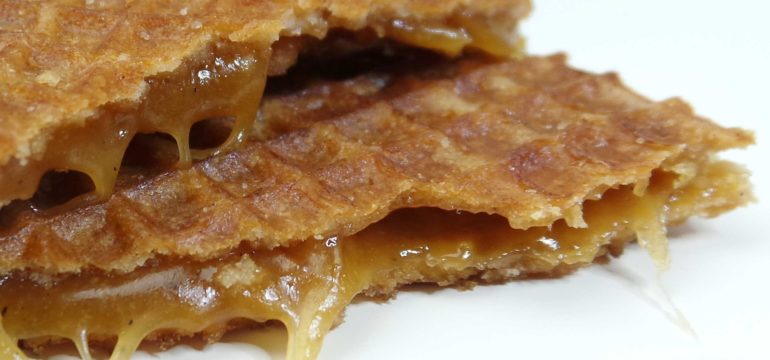
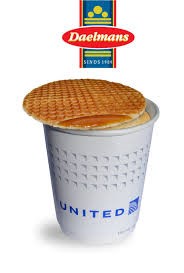
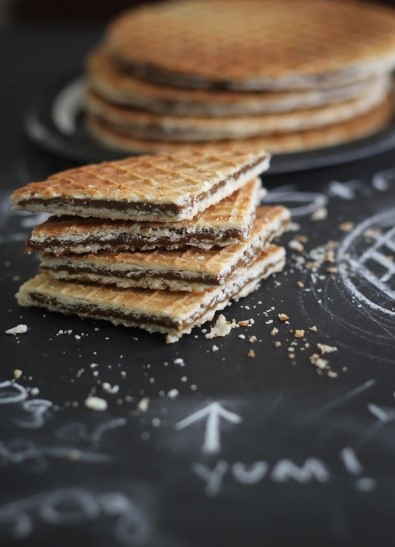


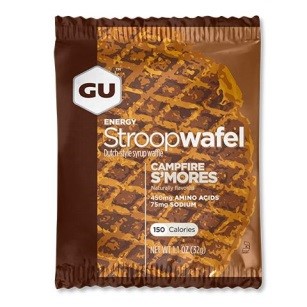


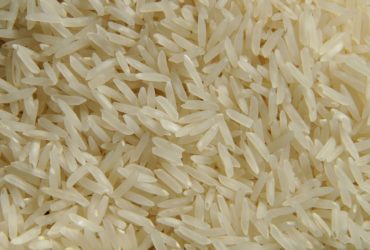



Not to diminish your research, but I have been eating Stroopwafels within the states since the early 90s. I would purchase them via this company in Billings, Montana… they started way before the sources you have researched.
Ooops… forgot the reference
https://caramelcookiewaffles.com/stroopwafel-bakery/about-us/